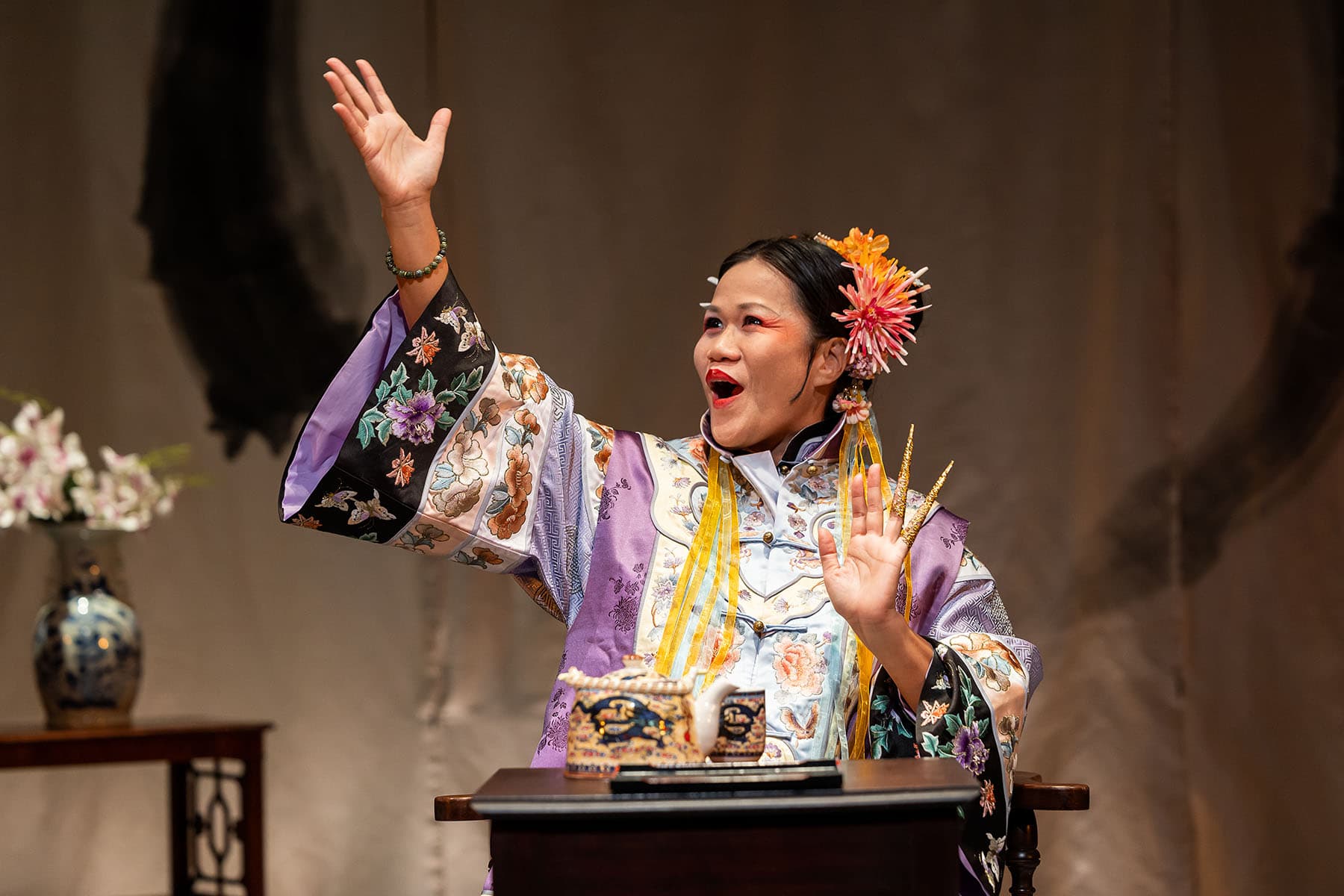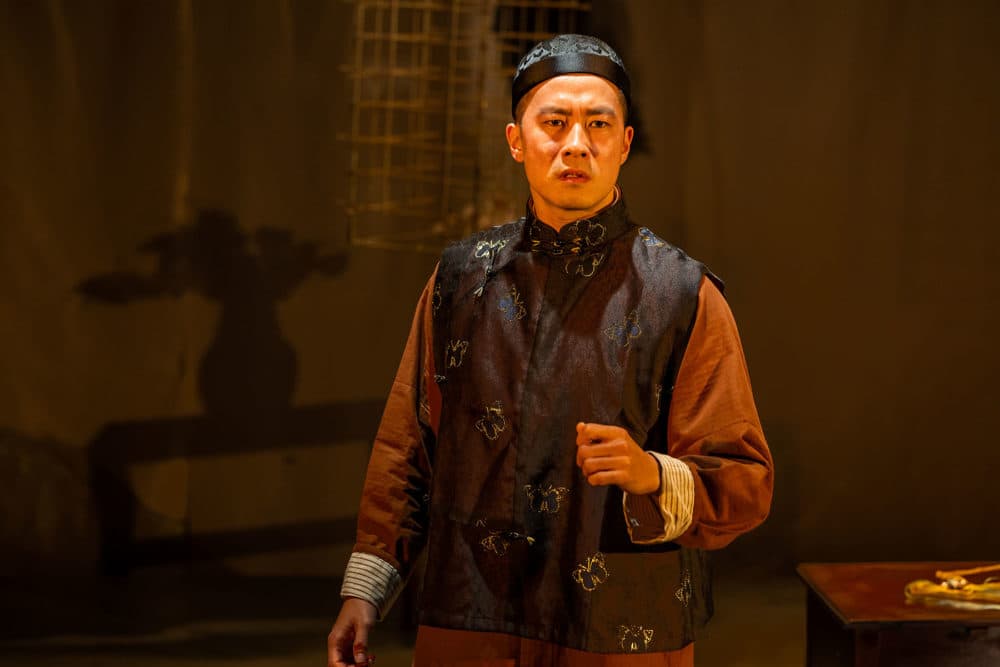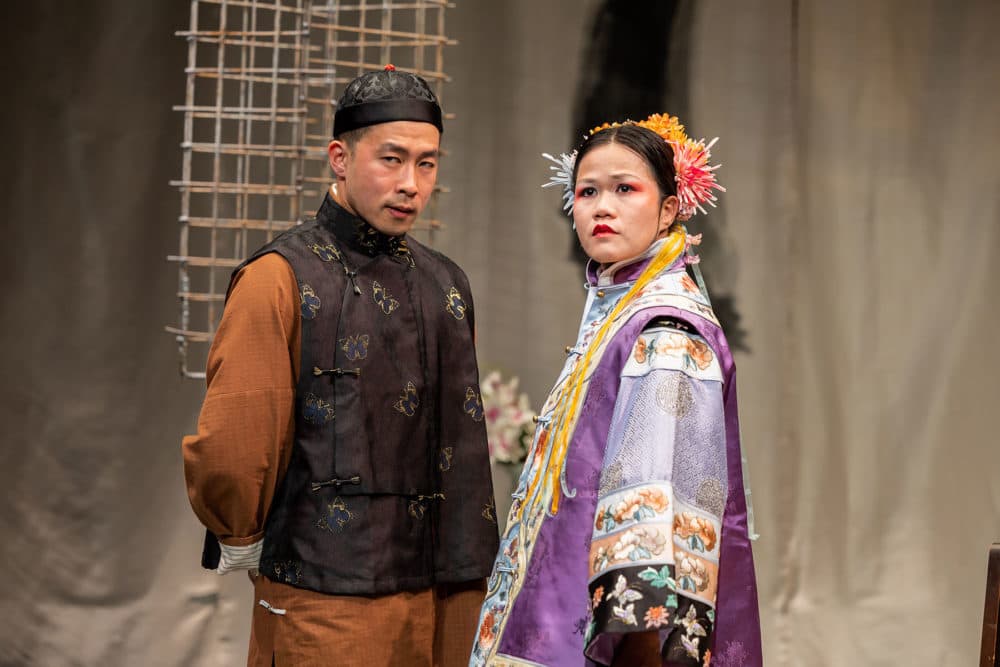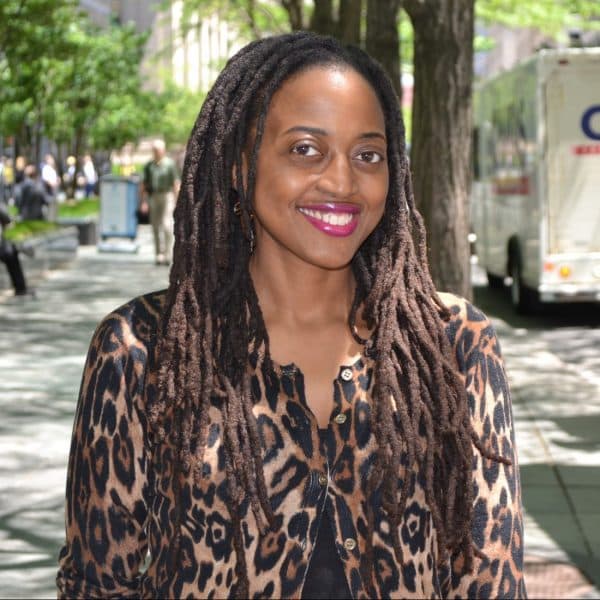Advertisement
Review
Central Square Theater poignantly revisits the time when 'The Chinese Lady' was put on display

A red and gold lantern hangs high above a chair in front of a watercolor-painted backdrop. It’s 1834 and Afong Moy, a young girl from Guangzhou, China, has come to America for two years to be put on display. Moy, beautifully portrayed by actress and dancer Sophorl Ngin in Central Square Theater’s production of Lloyd Suh’s “The Chinese Lady” (through Dec. 11), tells us that her family sold her to a pair of merchants. (The production, with a mostly Chinese-American production team, is staged in partnership with Boston's CHUANG Stage.)
The Carnes brothers were merchants who used Moy to promote various objects through a traveling exhibit. One Carnes catalog detailing Moy’s exhibition says, “Large sums of money have been expended, and great difficulties experienced, in overcoming the extreme jealousy of the Chinese, in allowing their females to be carried out of their country, or even to be seen by foreigners.”
In Suh’s two-person play, which had its world premiere at Pittsfield's Barrington Stage Company, Moy’s only company is Atung, a quiet interpreter who understands much more about life than he is willing to share and who has been in service for longer than he cares to acknowledge. Jae Woo brings just the right amount of subtlety to the restrained Atung. He shines when he and Moy meet then-President Andrew Jackson (also Woo) later in the play. While there, Woo’s Atung must quickly navigate the vast conversational and ideological landscape between the two at the meeting.

Moy’s bright-eyed optimism feels strange when measured against the larger forces of racism and supremacy she’s unknowingly up against. Her belief that she is part of a possibly healthy cultural exchange of sorts highlights her youth and naiveté. Suh cleverly suggests that curiosity — which Moy points to in the play as one of the reasons for her work — and leering spectacle might be close cousins then and now.
Each day is like most others: She eats the same dinner (with slight variations), uses her chopsticks and walks on her previously broken and bound feet in a circle around the chair. All the while, Moy is advertising vases, rugs and other objects sold by the Carnes. The brothers are also promoting her differences and otherness, and the weight of it makes this theater-goer cringe.
Ngin is excellent at portraying an altruistic woman victimized by America’s changing sentiment toward the Chinese. She and director Sarah Shin bring a heartbreaking poignancy to Moy’s understated narrative about the heinous happenings occurring while she worked (and afterward). There are lighter moments, too. Suh doesn’t make his points with a sledgehammer, but Moy’s story adds additional strokes to the painful portrait of America’s past.

The Chinese, of course, were hardly the only victims of racial injustice and Suh suggests that the changing sentiment toward the Chinese and the treatment of African and Indigenous peoples inform how Moy gets treated over time. Her duration with the Carnes brothers and later P.T. Barnum intersects with many defining moments. In the 1800s, the U.S. pulsed with the influx of enslaved Africans during the Trans-Atlantic Slave Trade, thousands of Indigenous people were forced from their lands and made to walk “The Trail of Tears” (roughly 2,200 miles according to the National Park Service) between 1830 and 1850, and later the Chinese Exclusion Act of 1882.
This is one woman’s story, but history is filled with people of color being put on exhibition throughout America and Europe. In the 1800s, Saartje (Sarah) Baartman, a South African woman was displayed in Paris for her large posterior (her bones and organs reportedly remained on view for 159 years after her death), in 1896 Sioux Native Americans were on exhibit in the Cincinnati Zoo and some of the Igorot people of the Philippines were on display at the 1904 World's Fair in St. Louis, Missouri.
Advertisement
Moy’s moving story eloquently provides another lens through which to view America’s history. Posters and more about Moy’s life and exhibit can be found on multiple websites. However, around 1850, Moy disappeared. It’s unclear what happened to her, but I do hope that Moy, made to perform for years, spent the rest of her life completely and utterly free.
“The Chinese Lady,” produced in partnership with CHUANG Stage, runs through Dec. 11 at Central Square Theater.
